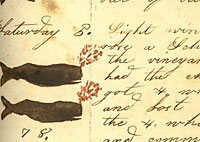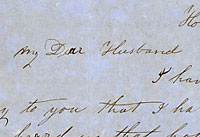Unit 3: Can You Help Me, Mr. Postman?

Lesson 1: What I Know/Want to Know About Communication
This lesson provides an opportunity to activate students’ prior knowledge and begin to generate questions that will focus research. Students engage in an active dialogue about the methods of long distance communication then and now and create a research plan.

Lesson 2: Researching Primary Sources
In this lesson students will review the differences between primary and secondary sources discussing in which circumstances each type of source would be desirable. Using a list of websites provided by the teacher as well as others they find, students will conduct their research online, searching for both primary and secondary source materials.

Lesson 3: Transcribing a Primary Source
In this lesson, students consider the challenges facing researchers of primary sources and try their hand at transcribing a letter from 1865. They will analyze the language style of the letter and rewrite it into modern language.

Lesson 4: Communication Today
In this lesson students will explore methods of communication between soldiers in Iraq and their friends and loved ones at home. After reading some examples online, students will analyze the language style of modern letters.

Lesson 5: Comparing Communication 1850 and Today
In this lesson, students will compare and contrast the methods and styles of communication between people over long distances in 1850 and today organizing their information in compare/contrast charts.

Lesson 6: Final Unit Project
Working together in groups, students will create a final project that pulls together their research and knowledge of what it means to communicate in 1850 and 2010. They will synthesize what they know of the challenges to communicating, technology, style of language, education level of the writers, and the content of that communication, representing their learning in one of a variety of project types.